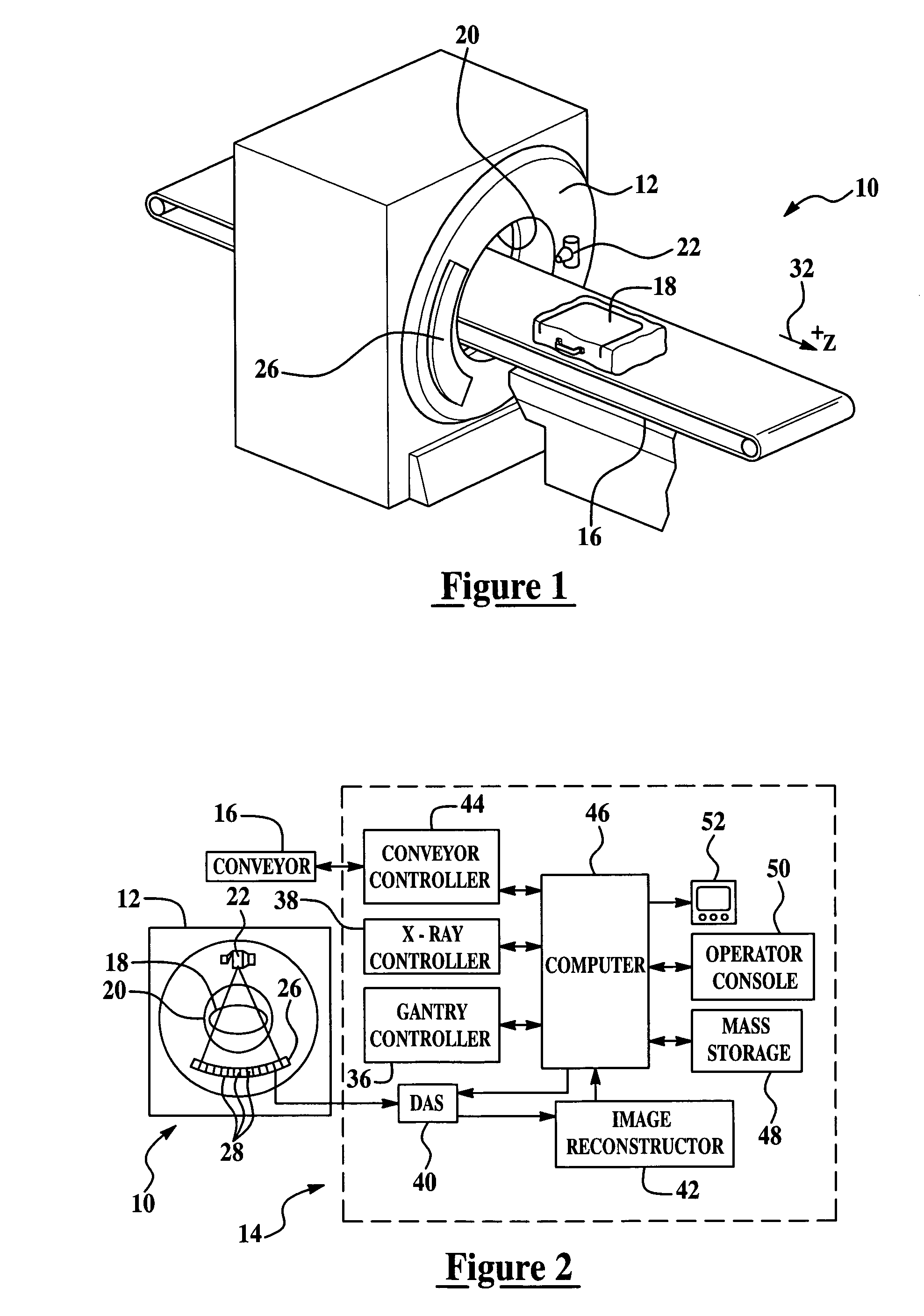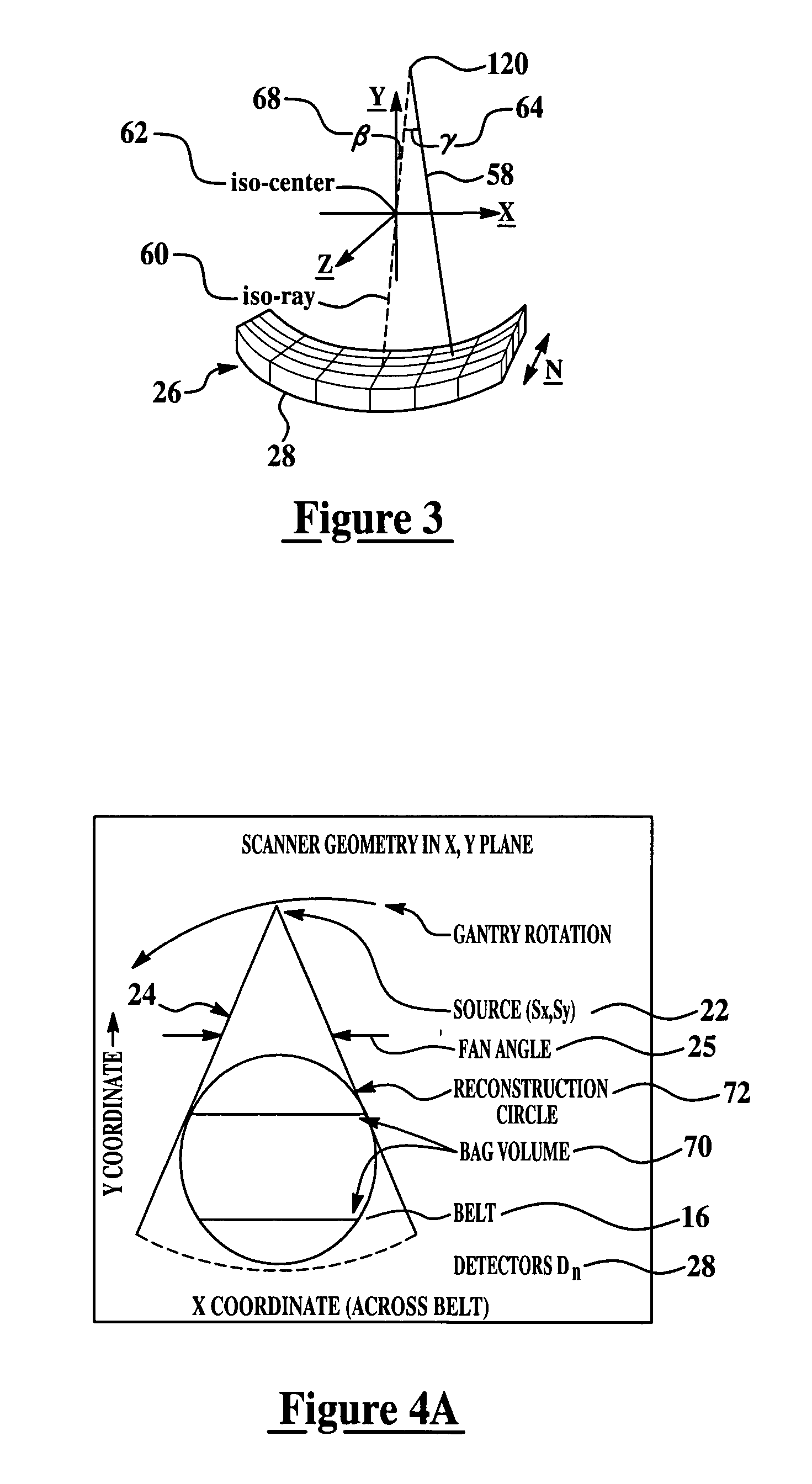Apparatus and method for providing a near-parallel projection from helical scan data
a technology of helical scan data and applicator, applied in the direction of material analysis using wave/particle radiation, instruments, applications, etc., can solve the problems of large amount of computation, difficult interpretation of sp images, and significant additional computation
- Summary
- Abstract
- Description
- Claims
- Application Information
AI Technical Summary
Problems solved by technology
Method used
Image
Examples
Embodiment Construction
[0023] The disclosure of the present invention relates to an apparatus and method for taking normalized data from a spiral CT scanner and creating a high resolution scan projection image directly from the raw data as opposed to reconstructing the entire volume and making a projection through that volume. The following U.S. Pat. Nos. 5,182,764; 5,367,552; 5,960,056; and 6,647,084, the contents each of which are incorporated herein by reference thereto, provide non-limiting examples of Computed Tomography (CT) Systems.
[0024] As used herein, raw data refers to the actual data value read from a detector. The raw data depends on the x-ray intensity at the detector, the gain of the detector, and any bias (offset) that is added to the detector value. Furthermore and as also used herein, offset data, gain data, sample data, Xray intensity, normalized data, converted data, x-ray source position, reconstruction circle, and reconstruction volume are as defined as follows:
[0025] Offset data: ...
PUM
| Property | Measurement | Unit |
|---|---|---|
| CT | aaaaa | aaaaa |
| volume | aaaaa | aaaaa |
| reconstruction volume | aaaaa | aaaaa |
Abstract
Description
Claims
Application Information
 Login to View More
Login to View More - R&D
- Intellectual Property
- Life Sciences
- Materials
- Tech Scout
- Unparalleled Data Quality
- Higher Quality Content
- 60% Fewer Hallucinations
Browse by: Latest US Patents, China's latest patents, Technical Efficacy Thesaurus, Application Domain, Technology Topic, Popular Technical Reports.
© 2025 PatSnap. All rights reserved.Legal|Privacy policy|Modern Slavery Act Transparency Statement|Sitemap|About US| Contact US: help@patsnap.com



